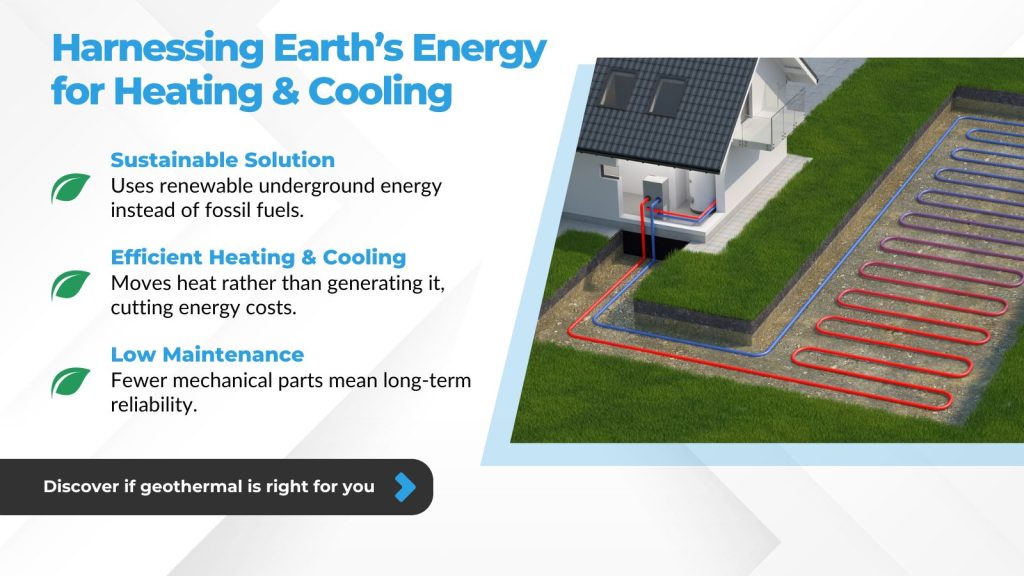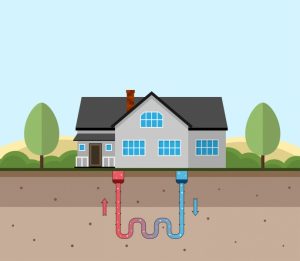In ancient times, people kept warm with fires and stayed cool by avoiding the sun in deep places like caves or by catching a breeze near the water. More recently, we’ve used furnaces and air conditioners, because staying at a safe and comfortable temperature is still critical to human wellbeing. But now there are all kinds of options! Heat pumps? Ductless mini splits? What’s going on?
Geothermal heating and cooling systems might seem like science fiction. How do geothermal heating and cooling systems work, and could they be the right choice for you? What are the benefits and drawbacks? Let’s take a closer look.

Earth Heat
Geo comes from a Greek root meaning earth, and is found in words like geography and geology. Thermal is Greek for heat, and might make you think of cozy, waffle-knit thermal long johns. Geothermal means heat from the earth. Because the earth is molten inside, there is a steady and consistent source of heat available there, with no need for building fires! But what about the cooling?
Constant Temperature
The key thing to understand is that all that molten magma is quite deep within the earth. You have to go more than forty feet down to get to the point where the deeper you go, the higher the temperature will get. And of course, just below the surface, the earth is significantly affected by the air temperature above it, and may freeze solid or be hot from the sun.
But there’s a sweet spot in between where the temperature is constant, between twelve and forty feet deep. During the winter, that constant temperature is warm enough that it can be used for heating. During the summer, it’s cold enough to be used for heating! You might call it the Goldilocks Zone: it’s just right.
Moving Heat
It takes a lot of energy (and thus forces you to spend a lot of money on utility bills) when you generate heat from scratch. That’s why heating our homes is a huge chunk of our annual expenses! But if all you need to do is move existing heat from one spot to another, it only takes a tiny bit of the energy you’d otherwise be using to create heat.
This is why geothermal systems are amazingly efficient. A loop of piping is partially buried beneath the ground which has a nontoxic, noncorrosive solution cycling through it. This solution has a very high thermal conductivity: it’s great at moving heat around. Whether it’s helping to carry warmth into or out of your home, it can do it so efficiently, studies show you could be saving 70% on your heating and cooling bills!
Pros and Cons
Obviously, this kind of energy savings is a huge benefit, whether you’re considering environmental impact or your bank balance. But what about drawbacks? The main challenge with geothermal systems is that their installation process is complex and involves digging with heavy equipment. Is it worth it? We’d love to chat with you about geothermal service in Brentwood, TN and help figure out if it’s right for you!
Covenant Heating and Cooling is your trusted resource for reliable geothermal systems in Nashville, TN. We are “Dedicated to the Promise of Serving You!” Contact us today.

